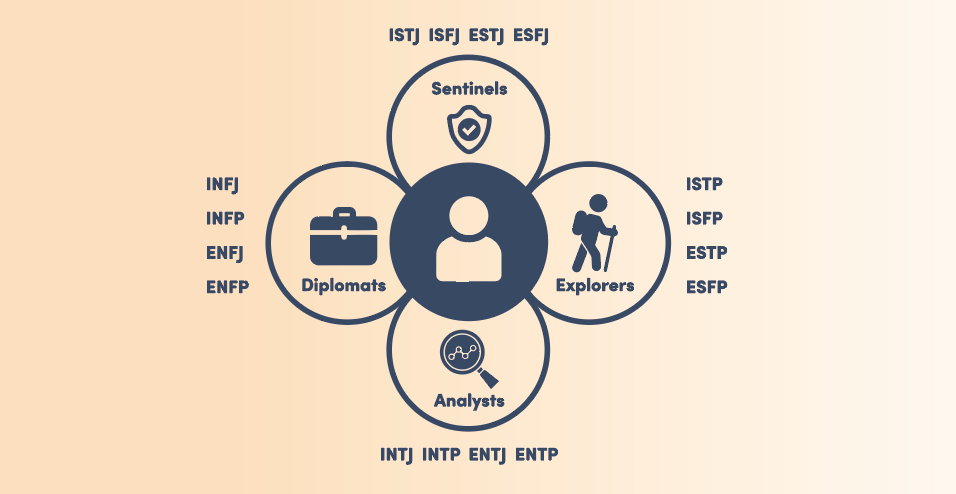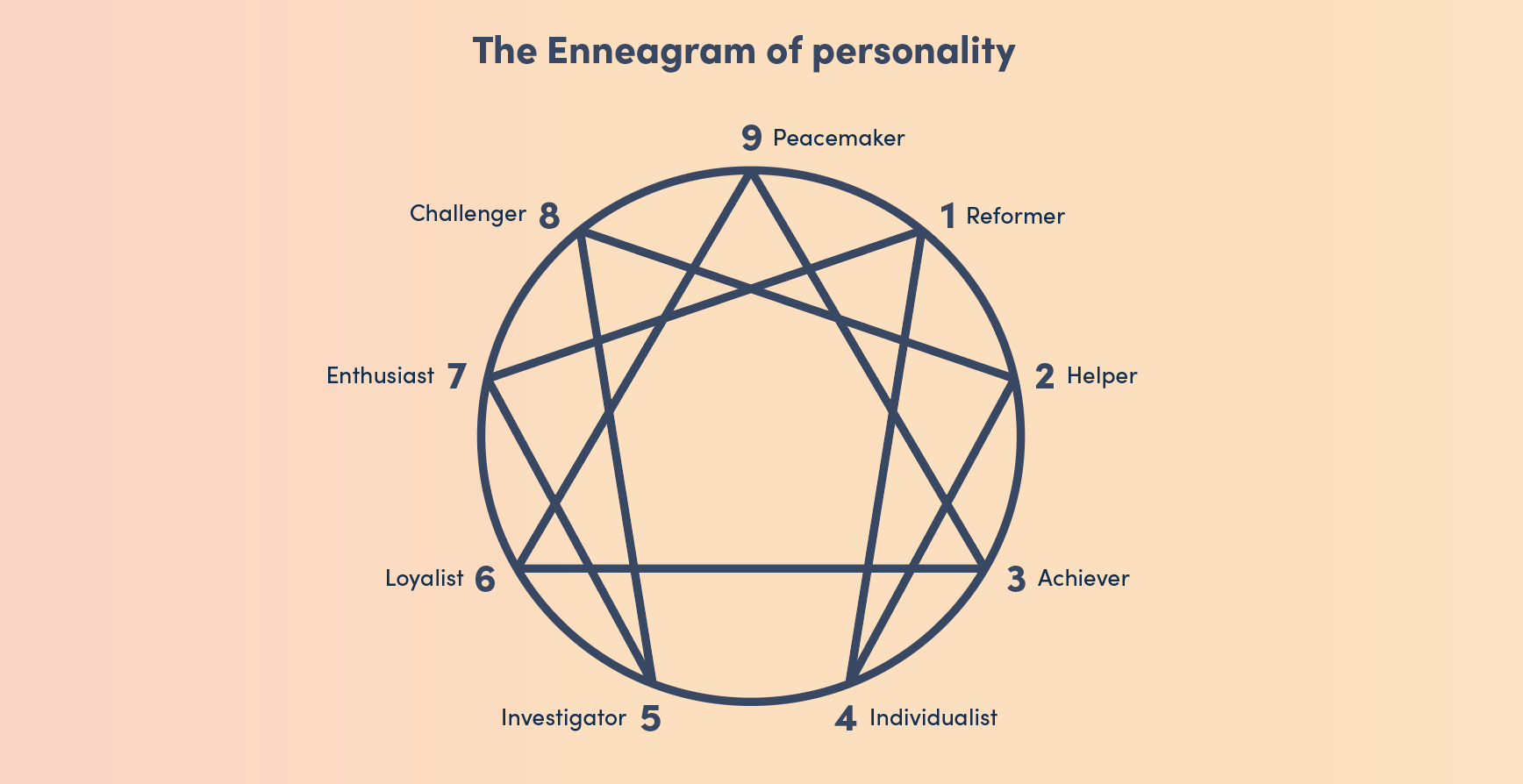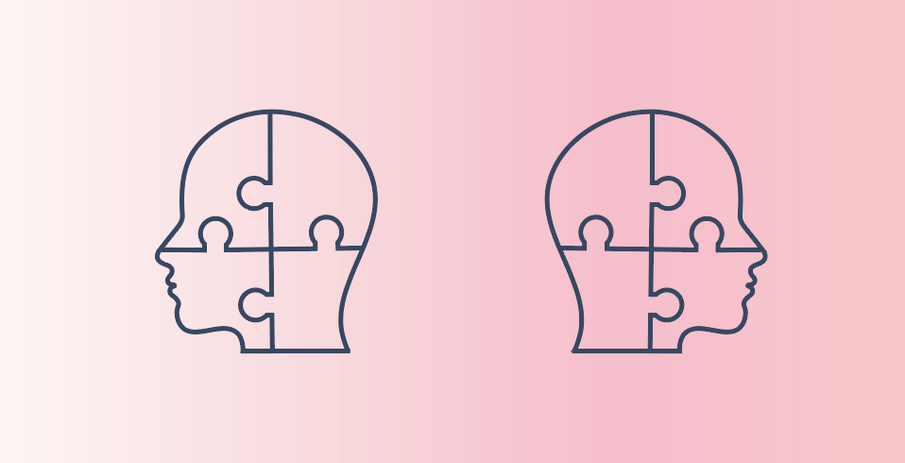INFJ, type 2 – ‘the helper’, high agreeability… There are lots of personality tests out there, each promising to give us more insight into the people we are. But what do the results really mean, and how can we use their findings?
As humans, something that sets us apart is how unique we are. Like snowflakes under a microscope, we all have different patterns – of behaviour, preferences, and responses – which form who we are as a whole. This can be thought of as our personality.
Each personality is different, formed in a certain way depending on how and where you grew up, among countless other factors. But, in between the differences, there are similar patterns to be found. Certain traits seem to sit together neatly, and this is what personality tests look for – clusters of traits that form alongside one another to create a personality ‘type’.
Helping us to recognise our particular patterns, personality tests were first used in the workplace and by psychologists. These days, a quick Google for ‘personality test’ will throw up numerous results, with various tests promising to help you uncover who you ‘truly are’.
As these types of tests are self-reported – you are the one answering the questions – and not always put together with evidence at their core, it’s important to take the results with a pinch of salt. These tests are a fun and engaging way to learn about your personality, but they don’t dictate who you truly are.
So, should we bother with personality tests, and how can we use the knowledge we gain from them in our everyday life? Let’s start by looking at some of the major tests you may come across.
Myers-Briggs type indicator (MBTI)
It’s estimated that more than two million people take the MBTI test every year, so it’s likely you’ll spot it when searching for a personality test to try. Created by mother and daughter team Katharine Briggs and Isabel Myers, the test is based on Carl Jung’s theory of personality, and looks at the following four dimensions:
Attitudes: extraversion or introversion. This is about how people regain their energy (introverts do so with internal reflection, extroverts do so by reflecting outwards with others), and whether or not someone is thought-oriented or action-oriented.
The perceiving function: sensing or intuition. This identifies whether or not a person perceives using their five senses, or their intuition
The judging function: thinking or feeling. This is about how a person makes a decision, either with rational thought or using empathic feeling
Lifestyle preferences: judging or perceiving. This reveals how a person primarily relates to the world, either through their perceiving function, or their judging function.
When you take the test, you’ll see your combination of these factors, and be given one of 16 different personality types such as ESTP (extraverted, sensing, thinking, perceiving) or INFJ (introverted, intuition, feeling, judging). You can then learn more about common characteristics of this type, and see if you recognise yourself in the description.

Myers-Briggs type indicator
NEO Personality Inventory-Revised (NEO PI-R)
Created by Paul T Costa, Jr. and Robert R McCrae in the 70s, this test started life as a way to investigate age-related changes in personality. The most recent version of the test, NEO PI-R, looks at six facets of what’s known as the ‘big five’ personality traits:
- Neuroticism
- Extraversion
- Openness to experience
- Agreeableness
- Conscientiousness
Today the test is typically used during recruitment and employment, to help maximise the productivity of a workforce.
The Enneagram
Inspired by ancient traditions, the Enneagram (coming from the Greek words ‘ennea’, meaning nine, and ‘grammos’, a written or drawn symbol) was brought to the 20th century in 1915, by philosopher and teacher George Gurdjieff. Over time, other psychologists added personality types to the diagram, integrating it with modern developments in the psychology field.
When you take the test, your result will be a number between one and nine, which represents an Enneagram type such as ‘the helper’, ‘the enthusiast’, or ‘the challenger’.

The Enneagram of personality
Should I take a test?
If you’re interested in learning more about yourself, and having a little fun on the way, why not? Self-awareness is a key part of personal development – it’s how we grow. There are lots of activities you can do to support this, including journaling and meditation, and you can consider a personality test the cherry on top of your self-awareness cake.
What to do with your test results
Read up on your result and see how much of it resonates with you. Some tests will give detailed report, and tell you more about how your personality type affects your relationships, work-life, and even what motivates you.
Use this information to note the strengths, weaknesses, and behavioural patterns you tend to fall into. Having this insight can help you adjust accordingly to work with your personality type, not against it. For example, if you learn you are more introverted, you can factor this into your lifestyle and make room for solo reflection to rebuild energy.
You could also ask loved ones to take the same test and compare results. Knowing each other’s personality types can open the door for more honest communication. Encouraging colleagues to take the test could also be incredibly valuable. It may reveal how you can work better together as a team, as you understand each other’s needs and ideal working environments.
With all this in mind, it’s worth noting that as we grow and change, our personalities can too. Try taking the same test every few years, and see if you notice any differences.
The more we know ourselves, the more we build self-trust. This paves the way for self-belief and the confidence to go for what we truly want in life. So, a personality test in itself may not be life-changing, but what you do with the results could be.
If you’re keen to explore personal development more, why not work with a life coach? Learn more and find the right coach for you at lifecoach-directory.org.uk


Comments